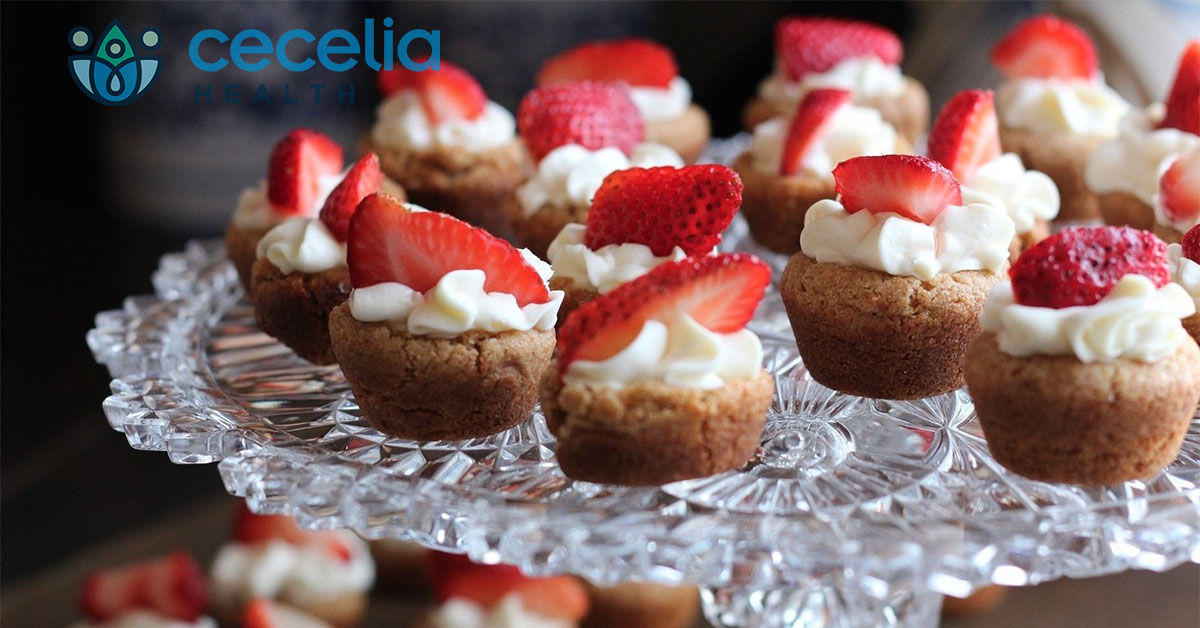Baking at home helps you control the sugar, fat and calories in your favorite recipes to keep them within your meal plan for diabetes control! There are a variety of ways to modify recipes to align with your meal plan but still enjoy plenty of flavor and treat yourself.
- Cut the sugar but keep the sweetness:
- Try reducing a standard recipe’s sugar content by 25–50 percent. It’s usually best to start with a smaller reduction (such as 25 percent) and gradually decrease the amount of sugar each time the recipe is made. You can test if the recipe modification has any significant or undesirable changes, then adjust as needed.
- Add natural sweetness with fruit:
- Use puréed, unsweetened fruit or fruit juices to replace some or all the sugar in a recipe. There will still be carbohydrates and calories contributed but you will add vitamins, minerals and fiber by using
- Be savvy with fat replacers:
- Many recipes can still work and be quite tasty with up to a 50 percent reduction in fat. To replace fat, but not volume, try using plain yogurt, applesauce, mashed ripe banana, or other puréed fruit for half of the oil or shortening called for in a recipe. If the product requires sweetness in addition to volume, applesauce or mashed ripe banana are great options.
- Try other sugar substitutes:
- There are a variety of sugar substitutes you can try such as stevia, monk fruit and sugar alcohols to add more sweetness with less calories. Using them in place of a recipe that calls for sugar may alter its taste and texture a bit so it is best to look at the sugar substitute’s directions for the ratio to use to replace traditional sugar.
- Up the fiber with adding whole grains or nut-based flours
- Replace some, for example half, of white flour with whole wheat or oat flour to add fiber which helps with satiety and blood sugar control. Choose recipes that incorporate whole grain flours and oats as well. You can also try recipes using nut-based flours like almond flour, which will increase the healthy fat and protein content of your baked goods while cutting carbs.
- Use dark cocoa powder and cocoa nibs to add flavor with less sugar:
- Seventy percent dark chocolate and cocoa nibs have less sugar than milk chocolate chips but still a wonderful chocolate flavor, not to mention antioxidants as well! Using unsweetened cocoa powder will not add any sugar at all and it’s low in calories, so if you have a recipe that has sweetness in it already, adding some cocoa can add nice chocolate flavor.
- Try recipes that incorporate veggies
- Have you baked goods and eat your veggies too! Look for recipes like quick breads, muffins and pancakes that call for added veggies like zucchini, carrot, sweet potato or spinach
- Cut carbs and calories by using nifty modifications and portion control
- Make an open face pie without the top crust, mini muffins/cupcakes over full size or a single layer cake instead of double. Cobblers and crisps without a bottom crust can also decrease carbs and calories as well.
A few tips for sticking to your plan for eating for diabetes includes gifting extra baked goods and sending guests home with leftovers to help decrease extra temptation. Freezing extras and individually wrapping them for a portion-controlled treat in the future is a great option, as well! And remember…it’s all about portion and balance, you can make any baked good fit in your plan by paying attention to serving size and what you are eating throughout the course of the day, particularly what you eating with your sweet treat.
